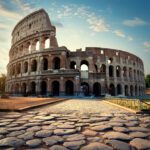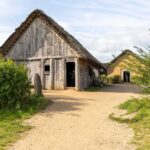By Dr. Gary O. Rollefson
– Enthusiastic semi-resident, archaeologist, and fan of Jordan and its lovely people
Welcome to my world! It’s been mine as an archaeologist and part-time resident for 30 years, and I’d like you to share it with me. “My world” in Jordan includes majestic archaeological sites, but also includes the modern residents of Jordan, some of the warmest and most hospitable people I’ve ever known. I am constantly impressed with the sense of welcome that Jordanians offer, whether in a small grocery shop in a remote rural village or on the shaded streets of the major metropolises of the kingdom.
There is a glorious, silent majesty about the sheer 1,000-foot cliffs of red sandstone that constitute the walls of Wadi Rum, a stark canyon near Jordan’s southern border with Saudi Arabia, where Lawrence of Arabia first saw the potentials of the Great Arab Revolt against the Turkish overlords of a small but feisty territory during World War I. The initial battles of this conflict took place amid the mute witnesses of a sacred location dating back more than five thousand years, testified by rock art in the canyon walls to mark appeals to the gods for another year of safety and prosperity in the forbidding sands of a challenging desert landscape.
 While Jordan is mostly desert, about one-seventh of the land is rich farmland that today continues to provide more food than the local population needs. The agricultural wealth is made clear by the remains of teeming cities constructed as early as the Neolithic period some 10,000 years ago. The world’s largest Neolithic town – ‘Ain Ghazal, near the modern capital city of Amman – was occupied by a people for whom ancestor veneration was the fundamental cornerstone of their spiritual life, for which the world’s oldest statues were produced.
While Jordan is mostly desert, about one-seventh of the land is rich farmland that today continues to provide more food than the local population needs. The agricultural wealth is made clear by the remains of teeming cities constructed as early as the Neolithic period some 10,000 years ago. The world’s largest Neolithic town – ‘Ain Ghazal, near the modern capital city of Amman – was occupied by a people for whom ancestor veneration was the fundamental cornerstone of their spiritual life, for which the world’s oldest statues were produced.
The natural bounty of the countryside was attractive to outside groups who saw opportunity for political and financial gain. A battlefield for the competing armies of Mesopotamia, Egypt, and Turkey dating back to the 14th century BC, Jordan underwent see-saw control by the armies of great civilizations, but always maintaining its own distinctive stamp on the foreign influences that inevitably altered the local fabric of art, architecture, and religion. Old Testament era tells (artificial  mounded cities) dot the Jordan Valley, including Pella, and the highland plateaus. Splendid cities grew during Greek and especially Roman times, including Jerash, the best preserved Roman ruins outside of the Italian peninsula.
mounded cities) dot the Jordan Valley, including Pella, and the highland plateaus. Splendid cities grew during Greek and especially Roman times, including Jerash, the best preserved Roman ruins outside of the Italian peninsula.
The list of Jordan’s riches, steeped in historical importance and austere beauty, goes on and on. I’d like to introduce you to “my people,” and to the impressive history (and prehistory) and thrilling landscapes of a land whose treasures are indeed impressive. Ask anyone who has visited Jordan before; they’ll give you resounding encouragement!


